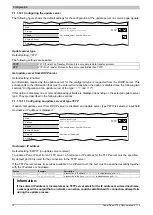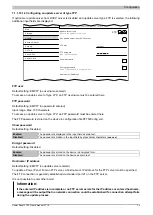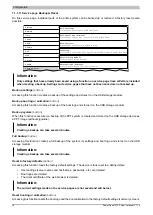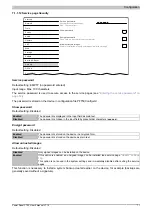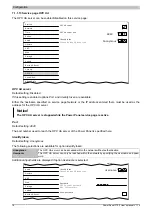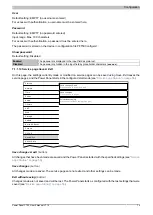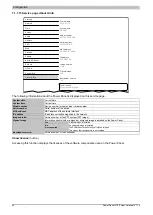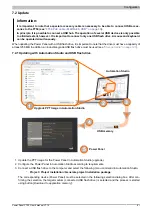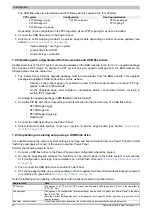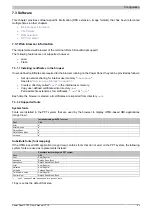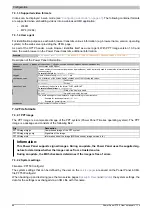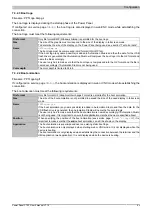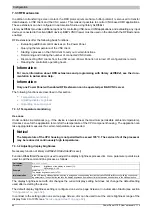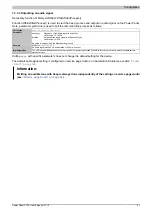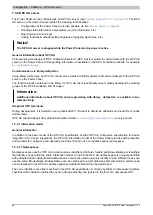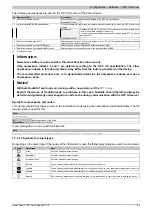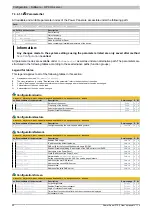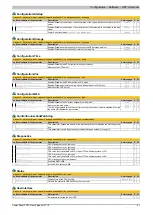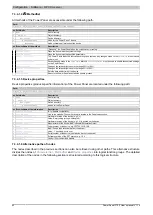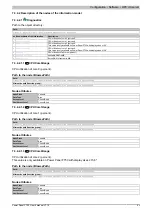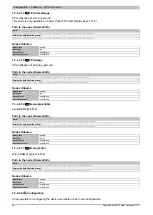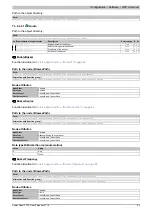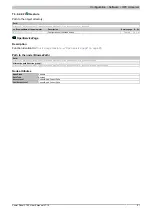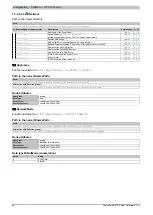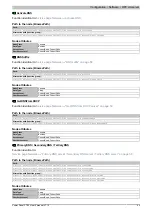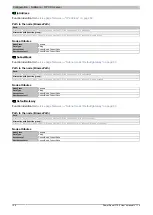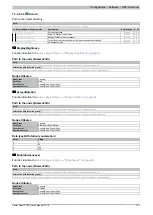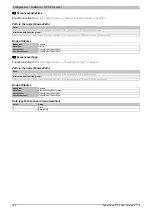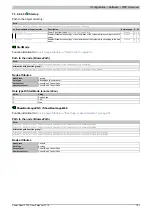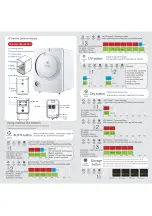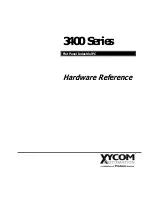
Configuration • Software • OPC UA server
88
Power Panel FT50 User's manual V1.19
7.3.4 OPC UA server
The Power Panel can be configured as an OPC UA server (see
"Service page OPC UA" on page 78
). The OPC
UA server on the Power Panel provides the following functionalities:
•
Configuration of the Power Panel as is also possible via the
.
•
Reading status information (temperature, version information, etc.).
•
Querying touch screen keys.
•
Calling functions/methods (setting brightness, triggering signal tone, etc.)
Notice!
The OPC UA server is stopped while the Power Panel service page is active.
General information about OPC UA
Corresponding knowledge of "OPC Unified Architecture" (OPC UA) is required to communicate with the OPC UA
server on the Power Panel. Corresponding information is available on the OPC Foundation website, for example
).
Communication via library AsOpcUac
Using library AsOpcUac, an OPC UA client can be created on B&R systems that communicates with the OPC UA
server on the Power Panel.
The function blocks contained in the library for OPC UA client functionality were mutually developed by working
groups of the OPC Foundation and PLCopen.
Information:
Additional information about OPC UA and programming with library
AsOpcUac
is available in Au-
tomation Help.
Graphical OPC UA clients
During development, it is helpful to use a graphical OPC UA client to determine attributes and node IDs of nodes
and methods.
OPC UA client
UaExpert
from Unified Automation GmbH (→
7.3.4.1 Information model
General information
In addition to the basic model of the OPC UA specification and the OPC UA Companion specification for device
integration (DI = device integration), the OPC UA information model of the Power Panel provides both properties
and methods for configuring and operating the Power Panel in its own address space (namespace).
7.3.4.1.1 Namespaces
Namespaces are used by OPC UA to create unique identifiers. Attributes
NodeId
and
BrowseName
are identifiers
that identify a node within the entire information model. A node in the OPC UA address space is uniquely identified
with attribute
NodeId
. Attribute
BrowseName
alone cannot be used to uniquely identify a node. Different nodes can
use the same
BrowseName
. BrowseNames can be combined to a path (Browse path) with which a certain node
can be localized in the OPC UA address space and attribute
NodeId
can be determined.
The node identifiers are either specified in the OPC UA specification or directly by B&R. A namespace therefore
specifies which institution defined the node (naming authority) and is listed in the form of a namespace URI.

